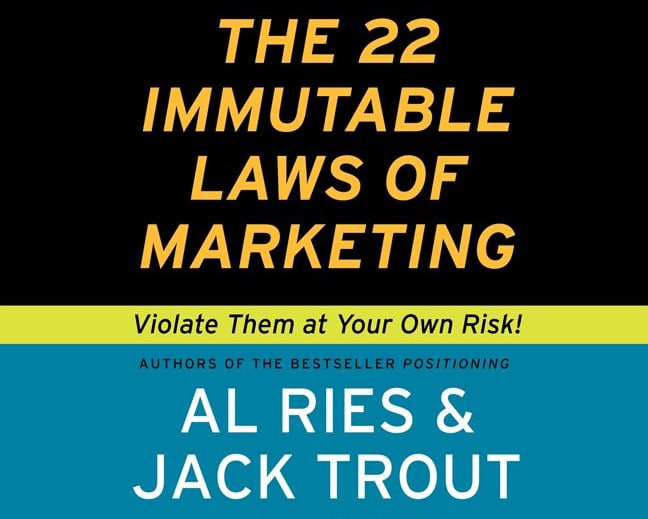Al Ries and Jack Trout – two legendary marketers – developed principles they called The 22 Immutable Laws of Marketing. They make for a great book, and I highly recommend it as a short but powerful course in competitive strategy. For me, the most critical takeaways result from the first two principles:
One: It is better to be first then it is to be better.
Two: If you can’t be first, set up a new category that you can be first in.
In other words, never chase a competitor’s positioning. It’s a fool’s errand. Adopting a strategy of “me too” is at best a formula for reducing a competitive position to price.
Those of us in the service sector should take this advice to heart. Chasing a competitor’s tail is what service firms do when we market ourselves as a “full-service” advisor. Full-service is a classic shared characteristic. Nothing is differentiating about claiming to serve any range of industries and client types. IE, we do it all for everyone.
The solution that Al and Jack advise is to create a market of one that we can move aggressively to own.
For example, rather than add a service to keep up, look for an opportunity to leapfrog your competitors by pushing out into an entirely new arena or technology.
Be the disruptor…the first to offer X.
If that is too large a leap, you are likely to find less dramatic opportunities among your current capabilities.
Chances are you already have a position that can be the basis of a market leader strategy- a track record in a vertical market, a dominant regional presence, expertise in a business type, or experience in supporting a horizontal market like HR or Finance. You get the point.
The idea here is to beyond bragging about your experience. Use that experience to establish yourself as the “leading expert in X.”
If a market is strong and growing, there are worse things in the world than owning it.
Here is your exercise for the day: Look at your value propositions and compare them to your competitors. If they are cookie-cutter similar and you can’t identify why a prospect should pick you because of them, go back to the differentiation drawing board.
Start by finding every legitimate differentiation opportunity. Evaluate the strength of the market each represents. The question you want to answer is: Are there opportunities here to rise above your competition? My prediction is that the winners will be obvious (but if not, do your due diligence).
Once you have your candidates, refocus your value messages on how you resolve the hot-button issues of that market segment over and above everyone else. If you can take that next step to differentiate yourself, you have your path to a market of one.
The lesson here is that differentiation is not merely one of many tools in your promotional toolbox.
As Al and Jack say, to thrive in a competitive market, you differentiate or die.
The book: You can find the book pretty much everywhere. Here is a link to Amazon.





